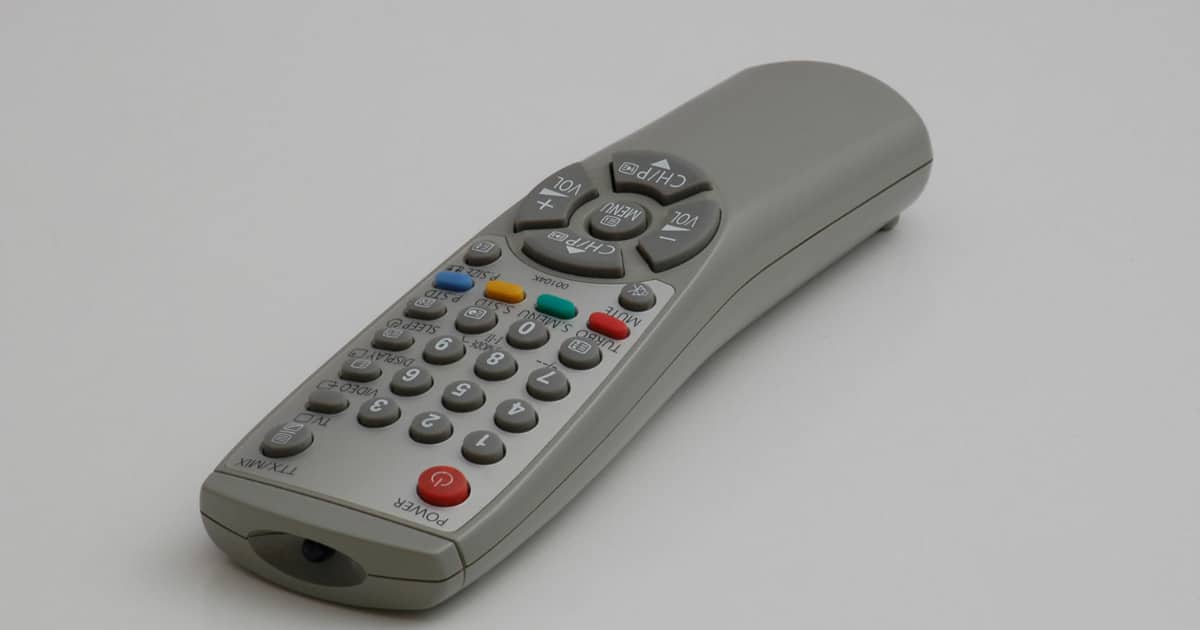Are you fed up with having to get up every time to adjust the channel on your television?
TV remotes exist to make our lives simpler, but have you ever stopped to wonder how they work?
In this article, we’ll look at what goes into making up a remote, its components, and how they have developed over time.
TV Remotes
TV remotes have become a mainstay in households. They enable us to operate various functions of our televisions without ever having to touch them directly.
The first remote was invented in 1950 by Zenith Radio Corporation and connected via wire connection – it was known then as “Lazy Bones.”
Since then remotes have come a long way. Now they are wireless and can control much more than just channel and volume – but how do they work? Let’s find out.
How Does a TV Remote Work?
TV remotes operate by sending signals to the television set. A receiver in the television then picks up these signals and interprets them, carrying out whatever command was given. But how exactly are these signals sent?
TV remotes use infrared (IR) or Bluetooth technology to send signals to the television.
IR remotes are the most common type, using infrared light for transmission. When you press a button on an IR remote, it emits an infrared signal picked up by the receiver on the television set.
Bluetooth remotes transmit radio waves, which are less common than IR remotes. As a result, Bluetooth remotes are only found with smart TVs that require more complex commands.

Components of a TV Remote
TV remotes have several parts that work together to send signals to the television set.
These components include:
- Buttons: These are the physical buttons on the remote that you press to send signals to the television.
- Microcontroller: This electronic brain processes signals from those buttons and sends their corresponding commands.
- Transmitter: This device transmits signals to your TV via IR or Bluetooth signal transmission.
- Battery: Powering up the remote allows it to send commands directly to the television.
Infrared vs. Bluetooth Remotes
As previously noted, two types of TV remotes exist Infrared (IR) and Bluetooth.
infrared TV remotes
An infrared TV remote is an electronic device that utilizes infrared signals to operate a television set. This convenient tool makes it ideal for anyone who wants complete control over their television without ever having to leave their seat.
The remote sends infrared signals to the television, deciphered by its receiver. Each command sent from the remote is unique and recognized by the television as its command code.
An infrared remote offers users the convenience of controlling the functions of their television set with ease from a distance.
It has become a staple in homes and offices, featuring new models with unique features designed to improve user experience.
This technology has revolutionized how people interact with their television sets.
Bluetooth TV remotes
Bluetooth TV remotes offer an effortless and user-friendly way to control your television’s functions from a distance.
You no longer need to be close to the television or aim directly at it to change channels, adjust the volume or switch input sources.
With these remotes, changing channels, adjusting the volume, or switching input sources is as simple as pressing one button!
Bluetooth technology in these remotes enables them to communicate directly with your TV without needing an IR (infrared) sensor.
As a result, these remotes typically offer faster and more reliable response times than traditional remotes.
Furthermore, Bluetooth remotes can usually control other devices’ functions, like Blu-ray players, soundbars, or game consoles – offering a one-stop solution for all your home entertainment requirements.
Investing in a Bluetooth TV remote is an excellent decision for those who want to simplify their TV control experience and add convenience to their daily routine.
The Evolution of TV Remotes
Since 1950, remote controls have come a long way. Now they offer more features and are much more sophisticated.
For example, some now even feature voice control – enabling you to operate your television using only voice commands!
Other remotes feature touchscreens, enabling you to control your TV with gestures.
Some even come equipped with motion sensors so that you can operate the remote by waving it around.
Troubleshooting Common TV Remote Issues
TV remotes aren’t perfect, and sometimes experience issues.
Here are some common ones and how to resolve them:
- Remote not working: This could be due to dead batteries in your remote. Try replacing them and see if that resolves the problem.
- Interference: They may interfere if you have multiple remotes in one room. Point the remote directly at your TV to prevent interference from eliminating noise sources.
- Range: If your remote isn’t working from a distance, it could be due to range issues. Try moving closer to the TV and see if that fixes the problem.
TV Remote Alternatives
Although TV remotes can be convenient, there are other ways to control your television.
For instance, some models now have mobile apps that let you manage the set using a smartphone.
Other options include smart speakers such as Amazon Echo and Google Home, which enable you to control your TV with voice commands.
Some TVs even have built-in voice assistants like Amazon Alexa or Google Assistant.
Future of TV Remotes
The future of television remotes looks bright. As technology progresses, we can expect more sophisticated and intuitive controls.
For instance, some companies are working on remotes that use artificial intelligence to learn your viewing habits and offer tailored recommendations.
Other companies are developing remotes that use gesture control, enabling you to operate your TV using hand gestures.
The possibilities are endless, and we can expect exciting innovations in the coming years.
Conclusion
TV remotes have come a long way since the 1950s “Lazy Bones.” Now more sophisticated and offering more features, whether you prefer an IR or Bluetooth remote, one thing is sure – remotes have made our lives much more straightforward.
We can expect even more revolutionary developments in TV remotes as technology advances.
There are endless possibilities, from artificial intelligence and gesture control to advanced programming capabilities.
So the next time you pick up your remote, take a moment to appreciate all that technology has made possible.




